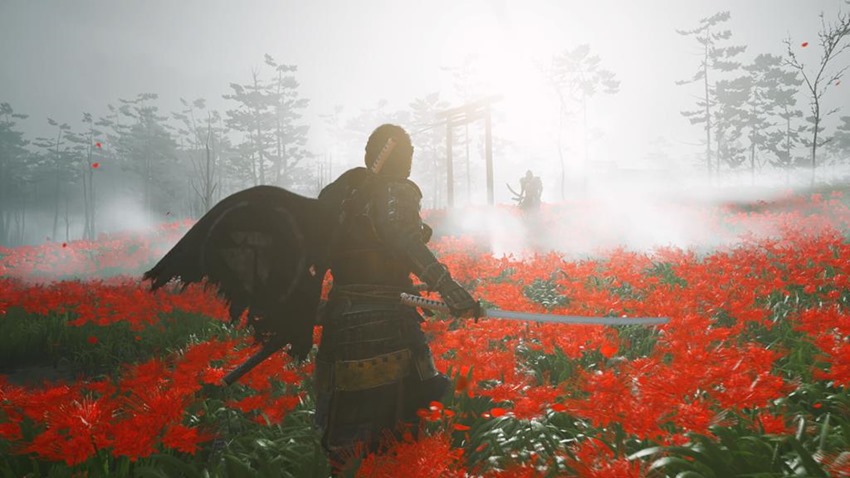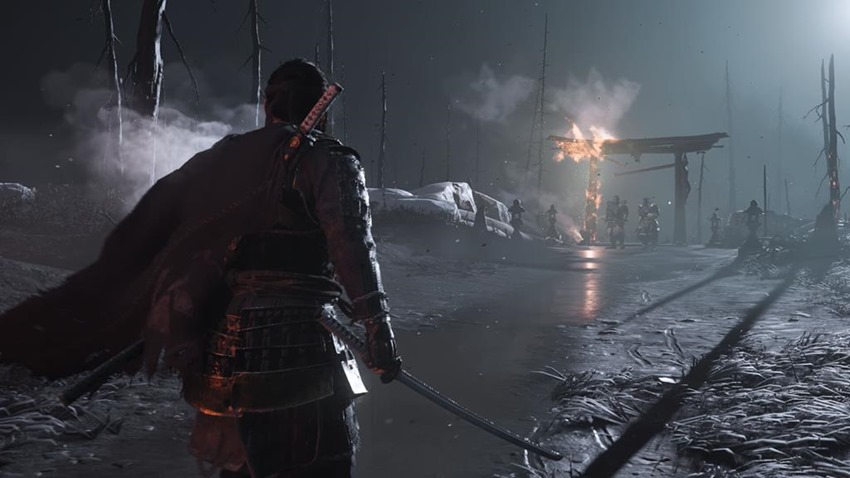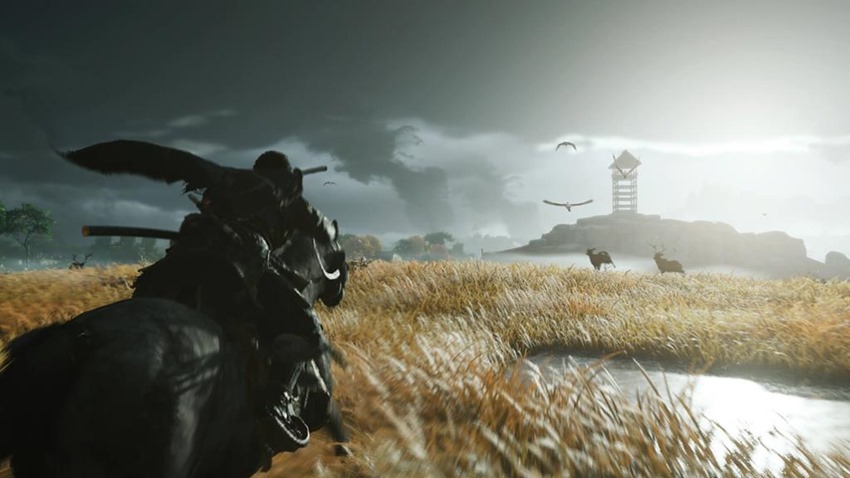
There’s a romantic idea that swordfighting is an elegant dance of style and grace, thanks to cinema carefully constructing an image of this ancient combat so that it’ll make for exciting action. In reality, having another chap run at you with a sword would most likely be a wake-up call that would result in you quickly soiling your armour and realising that Tom Cruise won’t be coming to save the day.
Fortunately, reality is mostly taking a backseat in Ghost of Tsushima. Sucker Punch’s samurai epic is leaning into the power fantasy of an age long forgotten, but with just enough authenticity added to the mix so that players can engage in a deadly duel where everything feels just…perfect. “Our hopes of achieving our goal, of creating the time machine we were after, rested on capturing the right feel for the katana,” Sucker Punch co-founder Chris Zimmerman wrote on the PS Blog.

Without katana combat that looked right, sounded right, and felt right, Ghost wouldn’t succeed. We could look for inspiration in the great combat examples in classic and modern samurai movies — my personal touchstone is the 2010 remake of 13 Assassins — but the things that work in movies don’t always work in games, so there was work to do.
In the end, we ended focusing on three things: speed, sharpness, and precision.
For the idea of speed, Sucker Punch ran into two problems: One, realistic sword fights are brutal clashes between two people whacking each other with sharpened chunks of steel and two, there was a limit to how quickly both Jin and the Mongol enemies could react to action. The solution? Creating a sense of combat that focuses on player anticipation over pure speed. “We realised that while there’s a limit to how fast players can react, there’s no limit to how fast they can anticipate,” Zimmerman explained.
If an enemy launches into an attack string, we need to give the player enough time to react to the first attack in the string, but since subsequent attacks can be anticipated, they can happen arbitrarily fast.
That combination — really fast player attacks, overlapping enemy attacks — created the intensity we were after, the sort of intensity we saw in 13 Assassins. No enemies standing around waiting to be attacked, just unrelenting aggression. That’s great, because we wanted players to be just a little bit nervous about jumping into a fight. Ideally, players leave fights a little bit exhilarated, because that’s how Jin feels. Barely in control, barely alive, but moving forward nonetheless.
For the sharpness pillar, Sucker Punch unsheathed a mantra of “Respect the katana’”, to create a battlefield players will have to be just as skilled in defense as they are in offense, unless they want to water the fields around them with their own blood. “Sharp weapons and aggressive enemies mean that death is always nearby,” Zimmerman said.

That sense of danger, that you’re never more than a few mistakes away from dying, is crucial to Ghost of Tsushima’s tone. Players have plenty of techniques to defend themselves, and even more ways to attack. If you concentrate, if you stay focused, you’ll survive the fight. If you lose focus, you’ll die. We’re trying to put you in Jin Sakai’s footsteps; those are the rules he is forced to live by, and they apply equally to you.
As for precision? Sucker Punch sought to give players a lifetime of training with their combat system, pushing for them to strike with accuracy and skill. “Jin does have slower, more powerful attacks, but they can be instantly cancelled at any point, leaving Jin free to respond to unexpected events, like the shout of a Mongol charging in to attack,” Zimmerman explained.
We also wanted to reward the player for precise execution of Jin’s abilities. Take Jin’s ability to block most incoming attacks. Basic execution of blocking is simple — hold L1, block the attack. But there are levels beyond that. Waiting to press L1 until the attack is about to hit changes the block into a parry. The attacker isn’t just stymied, he’s spun past you, vulnerable to a counter-attack.
And Jin earns a little bit of Resolve, Ghost’s measure of the samurai spirit that lets him push through the pain and injury he sustains. With the right upgrade, a third level of success opens up — press L1 just as the attack is landing, and the parry becomes a perfect parry, stunning the attacker and leaving him open to special, devastating counter-attack, and earning Jin a big dose of Resolve.
The end result is a system of stances, attack techniques which the player can switch between at any point. The right stance for the right enemy makes all the difference, as Jin becomes a tornado of sharpened steel and unstoppable death while enemies fall all around him.
Last Updated: June 24, 2020






















MechMachine
June 24, 2020 at 10:00
Tom Cruise won’t be coming to save the day……It was a great movie ok…even though there weren’t any couches.